I wish to draw a simple mouse trail using fragment shaders, similar in appearance to drawing the following in processing (omitting the step of clearing the canvas). I cannot wrap my head around the setup necessary to achieve this.
// processing reference using cursor as paintbrush
void setup () {
size(400, 400);
background(255);
fill(0);
}
void draw () {
ellipse(mouseX, mouseY, 20, 20);
}
Here's my vain approach, based on this shadertoy example:
- I draw a simple shape at cursor position
void main(void) {
float pct = 0.0;
pct = distance(inData.v_texcoord.xy, vec2(mouse.x, 1.-mouse.y)) * SIZE;
pct = 1.0 - pct - BRIGHTNESS;
vec3 blob = vec3(pct);
fragColor = vec4( blob, 1.0 );
}
- Then my confusion begins. My thinking goes that I'd need to mix the output above with a texture containing my previous pass. This creates at least a solid trail, albeit copying the previous pass only within a set distance from the mouse position.
#shader pass 1
void main(void) {
float pct = 0.0;
pct = distance(inData.v_texcoord.xy, vec2(mouse.x, 1.-mouse.y)) * SIZE;
pct = 1.0 - pct - BRIGHTNESS;
vec3 blob = vec3(pct);
vec3 stack = texture(prevPass, inData.v_texcoord.xy).xyz;
fragColor = vec4( blob*.1 + (stack*2.), 1.0 );
}
#shader pass 2
void main(void) {
fragColor = texture(prevPass,inData.v_texcoord);
}
Frankly, I'm a little bit in the blue about how to draw without data and "stack" previous draw calls in webgl on a conceptual level, and I'm having a hard time finding beginner documentation.
I would be grateful if someone could point me towards where my code and thinking becomes faulty, or point me towards some resources.

